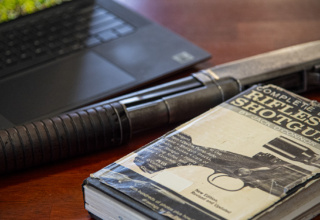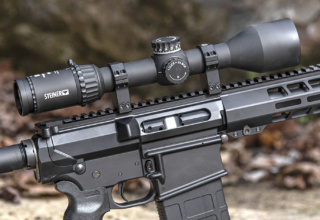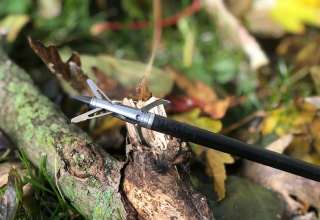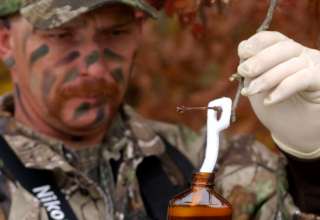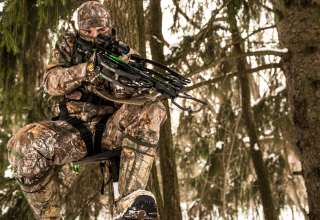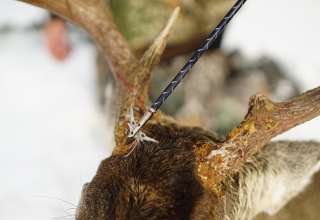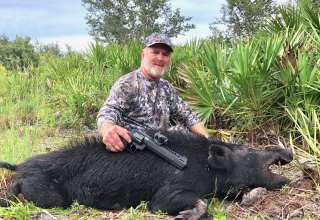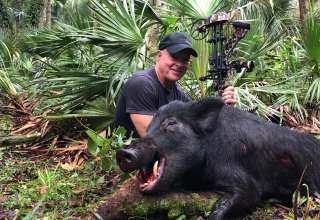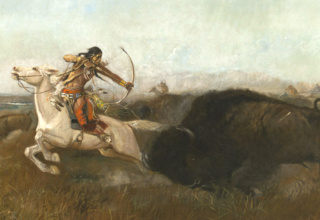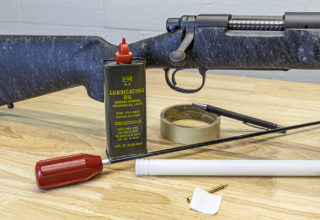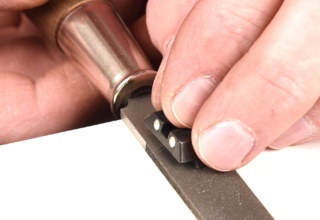Bowhunters vary as much as the game species and hunting conditions we face. Bowhunters have traditionally meant men shooting 55-70 pounds at 27-32” compounds. But increasingly serious bowhunters include women and youth archers limited by stature and strength to shorter draw lengths and/or draw weights. Bowhunting quarry ranges from 35-50 pound Southwestern Javelina to elk and moose weighing closer to 1,000 pounds. Conditions vary from tight brush to wide-open prairies or arctic tundra. And while a single broadhead might serve the stout, experienced chap wielding top-end kinetic energy in all situations, this isn’t universal. Generally, equipment capabilities (or limitations), prevailing conditions and game size/hardiness dictate broadhead ideals.

First let’s review some broadhead-performance realities. Penetration is determined by resistance through highly-variable hide, muscle, soft-tissue vitals and bone. All other factors remaining equal (including only the freshest, sharpest blades possible), narrower cutting diameters and less blade surface area penetrate deeper than wider or more extensive designs. Fewer blades penetrate deeper than more. And blade attack angles, and broadhead tips, that slice instead of chop or wedge always penetrate deeper. Finally, moving parts consume more energy (forward momentum) than rigid parts.
However, not all hits on game are alike. You might push a wide-cutting, super-aggressive mechanical through vitals with minimal kinetic energy on perfectly broadside shots where arrows slide between ribs. Make a regular habit of it and something will eventually go terribly wrong… I operate in a world of worst-case scenarios, not perfection. Picking the right broadhead for your equipment’s capabilities and conditions faced assures less-than-perfect hits don’t turn disastrous.
Long-Range Game
Classic long-range game, like pronghorn, typically has thin hide and light bones. This guarantees ample penetration even with diminished kinetic energy resulting from inertia bleed-off at longer ranges. Longer ranges also invite factors such as wind and spin drift and trajectory planning. Broadheads mimicking field-point flight characteristics are ideal.
Sleek mechanicals are the ticket, unless bowhunting where they’re illegal, making New Archery Products’ mini 3-blade, 1 1/16-inch-cutting Nitro the answer. The extra cutting diameter can turn marginal hits into lethal ones. NAP’s Trivex (3-blade, 1 5/8-inch cutting diameter), KillZone Low KE (2-blade 1 ¾-inch), KillZone 2 (2-blade, 2-inch), Spitfire (3-blade, 1 ½-inch), Shockwave (3-blade, 1 ¼-inch), Spitfire Edge (3-blade, 1 ¾-inch with serrated blades), and Spitfire Maxx (3-blade, 1 ¾-inch in standard and Deep Six) fill the bill.
Wider Blood Trails

More bowhunters pursue white-tailed deer than all else, most shooting the national average of 65 pounds at 29”. Rainy or snowy falls and thronged vegetation make wide-cutting, blood-spilling heads most welcome. You’re looking for cutting diameters in the 2-inch neighborhood in three blades, perhaps slightly more in 2-blade designs.
For example, NAP’s Spitfire XXX 3-blade mechanical includes 2-inch cutting diameter, the KillZone Maxx a rear-deploying 2 1/16-inch-cutting 2-blade. The BloodRunner series, heads with 7/8-inch in-flight blade profiles expanding to 2 1/16 inches in the II (2-blade, also in Deep Six version) and 1 ½ inches in 3-blade are another option. The newer Slingblade features semi-exposed, scissoring blades opening to 1 7/8 inches. But for maximum tissue damage and nasty would channels, look to the Spitfire DoubleCross, a 4-blade mechanical with 1 1/8-by-1 7/8-inch cutting action.
A quick note: if shooting less than average draw weight/lengths, but still within a 50-55 pound minimum, the mechanicals highlighted beneath Long-Range heading substitute well.
BIG Big Game
I know I could kill an elk with conservative mechanical designs (I shoot 70 pounds at 30”), but when September arrives and bulls are bugling I avoid them outright. After 34 years of bowhunting elk (23 years of those guiding bowhunters) and dozens of bulls under my belt, I’ve seen too many examples of how sleek, cutting-tip broadheads saved my rear, contrasted to witnessing mechanicals on similar hits fail outright. When bowhunting elk, make my broadheads fixed blades, period.
NAP offers several elk-ready models, so there’s really no reason to risk a mechanical. The universal ingredients are fixed blades—some replaceable—and three cutting edges assuring cross-cuts that spill more blood. The Redneck, Thunderhead, Thunderhead Edge (serrated blades) and Thunderhead Razor are included here. The Thunderhead Edge and Razor are especially efficient, set-screw-anchored, offset blades working with right-hand-helical fletching to “drill” through game.
“Magnum” elk medicine (NAP’s all-steel mini and true cut-on-contacts) also prove especially useful for bowhunters wielding limited kinetic energy—women like my wife shooting 50 pounds at 25”, youngsters shooting poundage down to 40 pounds on deer-sized game, or men with arthritic joints, abused rotator cuffs and similar symptoms of advanced years. These include the all-steel, mini Nitro (1 1/16-inch cut) mentioned earlier, and HellRazor and Deep Six Big Nasty (an ideal combination on Easton’s pile-driving 4mm arrows), both with 1 1/8-inch cutting diameters, true cut-on-contact designs created by one-piece-welded construction impervious to destruction.
For more information on New Archery Products full line of products, visit http://www.newarchery.com/broadheads
- Gaining an Edge With Sharp Broadheads - November 17, 2017
- Using Scents to Create Higher-Odds Bow Shots - November 7, 2017
- Fundamental Crossbow Maintenance - October 25, 2017


